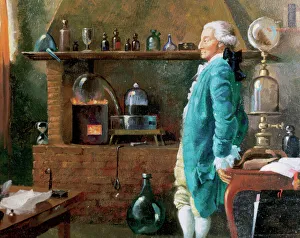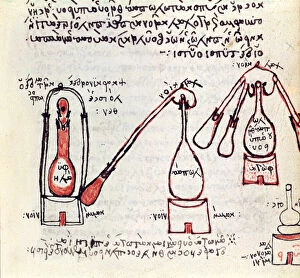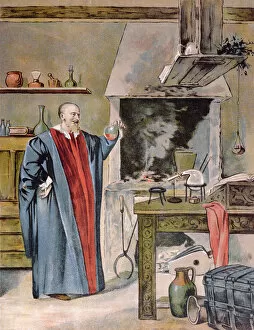Alembic Collection
The alembic, a symbol of scientific progress and alchemical transformation, has played a significant role in the history of chemistry
All Professionally Made to Order for Quick Shipping
The alembic, a symbol of scientific progress and alchemical transformation, has played a significant role in the history of chemistry. One of its most notable proponents was Antoine Laurent Lavoisier, a French chemist who established the composition of water. In "The Chemist" (1827), an allegorical scene depicts Flora, Botany, Physics, and Pomona surrounding Lavoisier as he conducts his experiments with the alembic. Dating back to ancient times, illustrations such as the one found in Ms 2327 f. 81v showcase two alembics and their receivers from the late 3rd or early 4th century. Over time, various types of chemical stills have been developed to refine substances through distillation processes like those seen in the Benedictine distillery illustration from circa 1930. Alchemy workshops were also popular during different eras; Emperor Rudolph II Habsburg is depicted in his workshop on a colourful lithograph. The pursuit of transmutation can be observed further in artworks like "The Alchemist" (1663) by Cornelis Bega and "The Cage of Fools" (1557-63) by Sebastiano di Re. Even into the late 19th century, gold remained an object of fascination for many alchemists seeking its secrets. George Greatbach's creation titled "Gold" captures this allure perfectly. Throughout history, whether it be through scientific discovery or mystical pursuits, the alembic has stood as a powerful symbol representing mankind's quest for knowledge and transformation.






































